COVID-19 Overwhelm
As the economy reopens and employees return to work, there are concerns about how equipped the medical and pharmaceutical communities are to deal with predicted spikes in COVID cases.
According to the CDC, “covid-19 cases will surge to about 200,000 per day by June 1.”
As COVID cases increase, labs are becoming overwhelmed trying to handle the influx of cases.
As of the beginning of April, private labs are handling 85% of COVID testing requirements.
And these labs are already getting overwhelmed by the volume of cases they are handling.
Even the largest labs in the country are experiencing difficulties with the amount of COVID testing they are being asked to perform.
Handling The Influx
Private companies largely comprise testing capabilities in the US. As COVID testing requirements continue to skyrocket, the private lab sector will need to respond accordingly.
The demand for COVID-capable labs will continue to rise for the foreseeable future.
To that end, here are 10 things to consider if you’re trying to quickly get running with a COVID testing lab.
#1 – Speed
The first thing to consider is your timeline. How quickly are you trying to get this lab up and running?
If you’re goal is to be functional within a week, you will likely need to swing by Home Depot for some folding tables and latex gloves.
Realistically, your best bet will be to take advantage of a quick-turnaround program from a reputable manufacturer.
Instock Labs offers an emergency equipment catalog. Products from this lab can be delivered in 4-6 weeks, much faster than the standard 12-16 weeks required for standard build times.
The time constraints you are working under will directly impact the comprehensiveness and quality of your lab. Understand that if you need certain equipment or custom dimensions, it will increase the time required to outfit your space.
Fast Furniture
There are certain kinds of lab equipment that can be delivered quickly and give you great flexibility.
Tables
Tables come in all different shapes and sizes. They are versatile and can support many different procedures. If you are pressed for time, rolling tables will work in a pinch.
Benches
Benches are another flexible and quickly available type of lab furniture. Like tables, they are flexible, relocatable for future spaces and protocols, but they are able to be configured with adjustable shelving, plumbing, and electrical services. They can be easily moved and reconfigured by staff or maintenance personnel.
Ventilated Enclosures
It’s likely you will need exhaust systems of some sort. Ventilated enclosures that sit on the work surface are useful if you don’t have time to order a bio-safety cabinet or fume hood. Protocols and local ordinances will be important to assess to determine BSL categories and equipment needs.
#2 – Workstations
Assuming that you have more than 1 week to get your lab up and running, the most important thing to start with is your workstations.
To help understand your workstation requirements, there are a few questions you can ask yourself. First, how many work cells will you have? The number of cells you are working with will determine how many individual testing areas you will need.
How many lab employees will be using the space? If you have 10 employees, but only 5 using it at a time, do you need 5 workstations? Or, do you need 10 workstations because there are 10 different processes that will be running and the 5 workers will move between them?
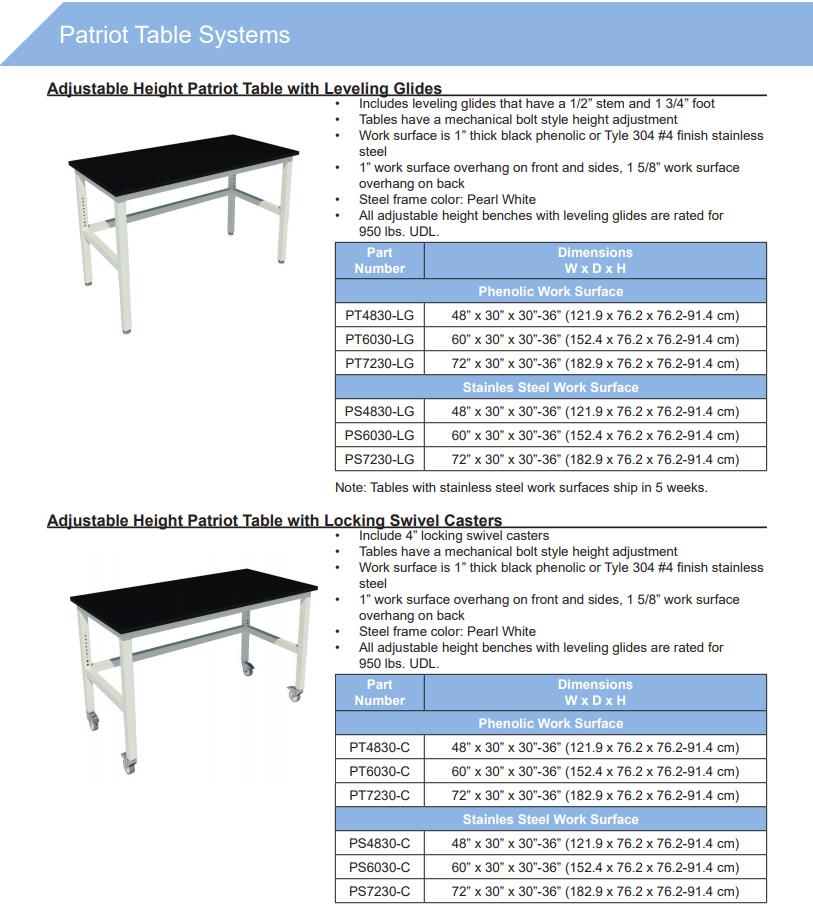
Next you will want to consider what kind of space each worker will need. Will the worker be sitting or standing? Do they need power, water, exhaust?
Once you have answered these questions, you will have a clearer idea of what kind of workstations you need. You can then begin to build in modules around these requirements.
#3 Layout
Once you have your workstation requirements settled, it’s time to focus on your layout.
Process flow
Process flow is essential if you want to make the most of your lab space and equipment. Process flow means processes that are similar or share equipment should be positioned closely to each other.
You want to layout your workstations so that everyone has the best access to what they need without interfering with each other.
For example, placing a centrifuge in the middle of 4 workstations that all need to access it. When developing your layout, pay special attention to any ergonomic issues or unintentional efficiency issues. Ask your users for input here! Their involvement can be invaluable.
Specialty equipment
Specialty equipment would be any items specifically required for your processes. At this point you need to ask yourself what equipment will be needed for your testing process?
This could be anything, we’re not sure what you may need, but this is a consideration you need to have while planning your layout.
There are a couple of reasons why you need to consider your specialty equipment.
- 1) How much space will it take up?
- 2) Does it require a special height bench?
- 2) What kind of disposable or consumable materials are necessary?
- 3) Are those materials close at hand and readily available?
- 4) Does it need special power such as a 220V outlet or a dedicated 20A circuit?
#4 – Services
After layout, it’s time to consider your services. These are going to be determined by the processes you are working on (see the Specialty Equipment note above) as well as typical lab design expectations. Services include power, gasses, and water.
Power
What equipment will need to be powered and where in your lab will it be located? What kind of power will it need? What computer equipment power will need to be present?


Gasses
Do you need compressed air or nitrogen? If so, where are you going to store the canisters and how does it need to be delivered to the workstation?
Water
What water services do you need? Will your workstations need faucets built-in? Will you need DI service?
Location
Do you need services at the bench or do you just need it for certain pieces of equipment? Services can be drastically simplified if they only need to be available for a few pieces of equipment or at centralized areas. If they need to be available at each workstation, that is more complex and more expensive.
#5 – BioSafety Cabinets
According to the WHO, any COVID-19 molecular testing requires a BSL-2 level facility[.](file:///C:/Users/jwelc/Downloads/WHO-COVID-19-laboratory-2020.5-eng.pdf) This means that a bio-safety cabinet is required to work on COVID-19 viral strains.
BSL-2 (Biosafety Level 2) requires “all procedures that can cause infection from aerosols or splashes are performed within a biological safety cabinet (BSC).”

Bio-safety cabinets provide HEPA filtration. The air being exhausted out of the cabinet has been purified of any contaminants that may be harmful to lab workers or others who might be in the range of the general exhaust.
Bio-safety cabinets are also designed to be comfortable for lab workers and current models have numerous ergonomic advancements that reduce repetitive motion injuries and benefit your employees. Look for inclined sash, ECM motors for sound level reduction as well as filter loading management, clear line of sight displays and ergonomic sill thresholds.
#6 – Washup/Cleaning
At this point you’re ready to consider washing stations and cleaning challenges. You have your processes and equipment in place, the cleanup will naturally flow from those considerations.
What kind of washup and cleaning do you need for your people and your processes?
1) Sinks
Do you need a sink in this area for employees to wash hands and take care of spills? Do you need a sink to wash lab tools like pipettes, dishes or flasks?
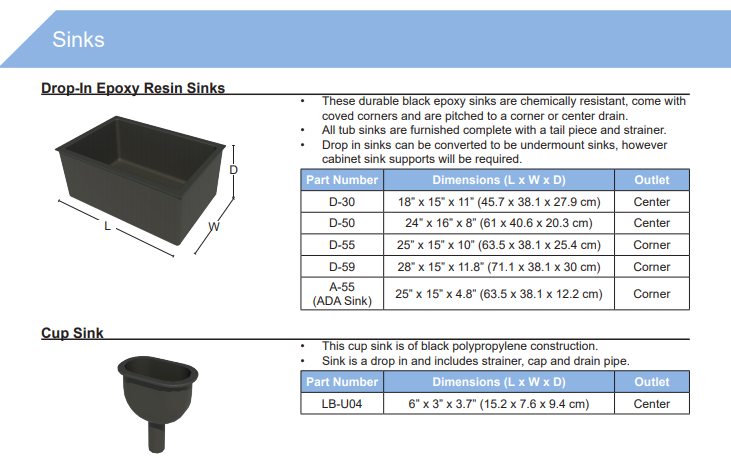
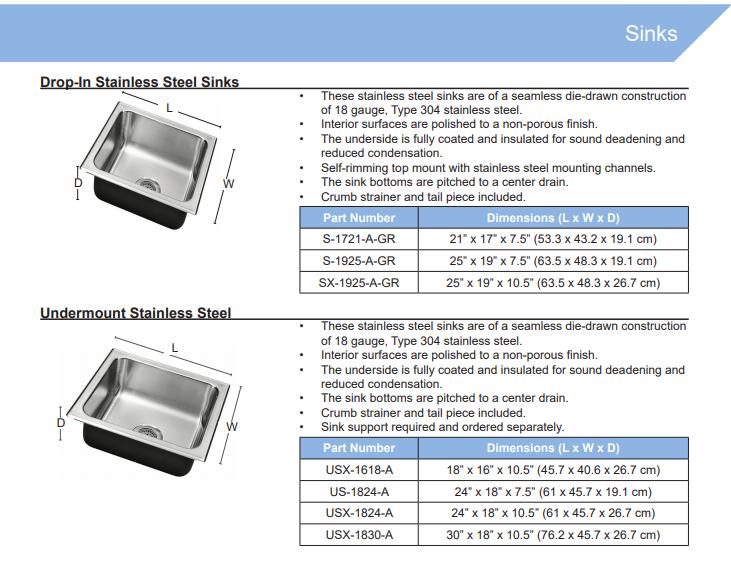
2) Faucets
The type of faucet you need depends on what you need to wash. Whether you’re washing workers hands or specific lab tools, you will need to prepare your lab with proper faucets.


3) Disposal
In some cases, you may be dealing with entirely disposable lab accoutrements. If that is the case, how will you be handling waste disposal?
#7 – Dedicated Storage
In a lab that is being built quickly, storage has to fit where it can. Considering the flexible nature of a lab like this, you may not be able to perfectly plot out and plan the storage.
Your best options will be adjustable shelving on your workstations and open wire shelving units.
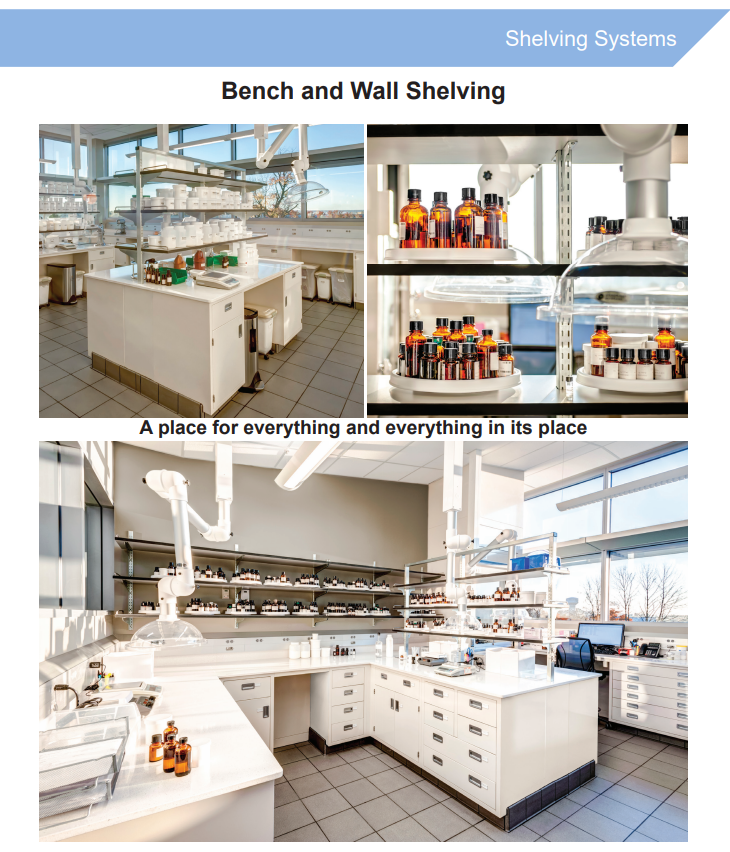
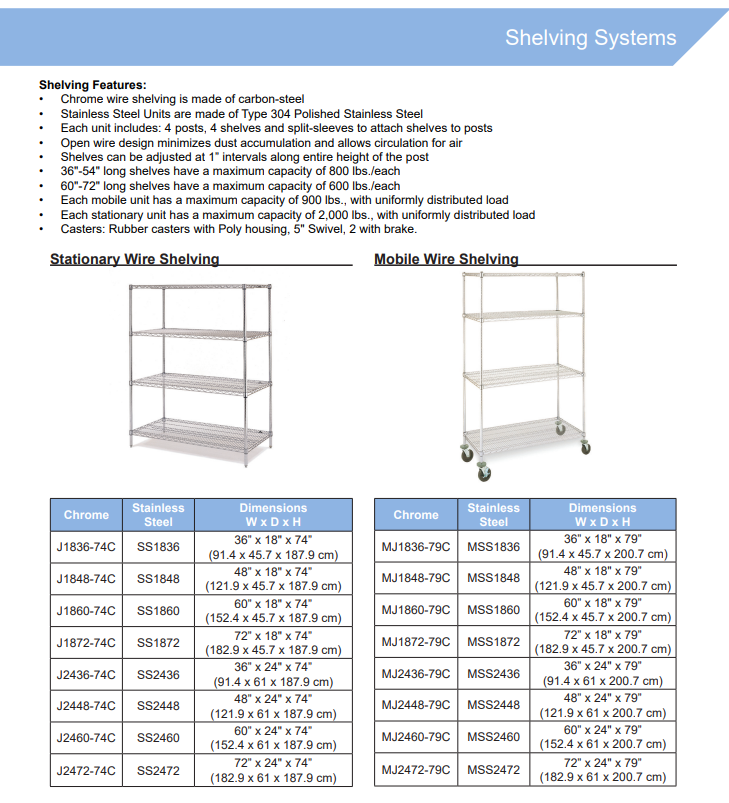
These types of shelving will be easily accessible, flexible, and make the best use of the equipment you’re already purchasing. They are also easy to source and deliver quickly.
If you have an open wall, you can mount a bank of upper cabinets and base cabinets so you get use of storage and a countertop. But this will also make your installation more permanent.
#8 – Gowning area
Because the WHO COVID-19 testing guideline requires a BSL-2 level facility, your workers will need to wear PPE (Personal Protective Equipment) in the lab.
BSL-2 (Biosafety Level 2) contains the following PPE requirements:
- Lab coats and gloves.
- Eye protection.
- Face shields.
Your employees may need a gowning area where they can put on and take off any PPE that they need for your processes. Additional PPE may include:
- Gowns
- Face masks
- Tyvec Suits
#9 – Furniture
Beyond your workstations, there are other furniture considerations that must be made.
Seating
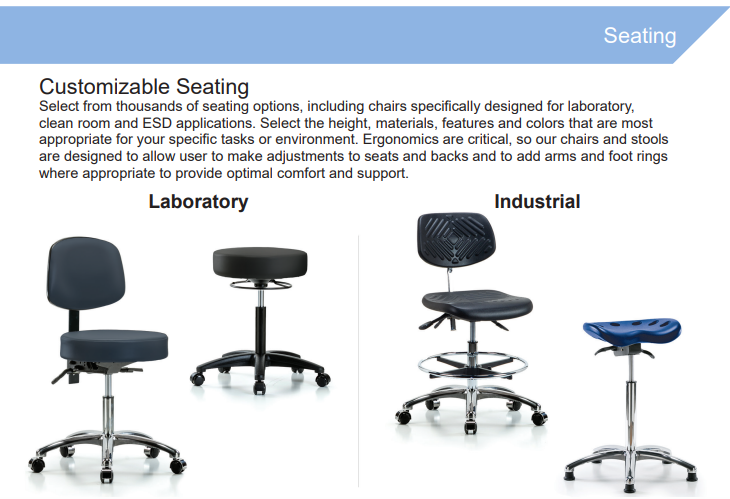
Seating options depend on the kind of work your lab is performing and the workstations your employees will be using.
Garment Racks
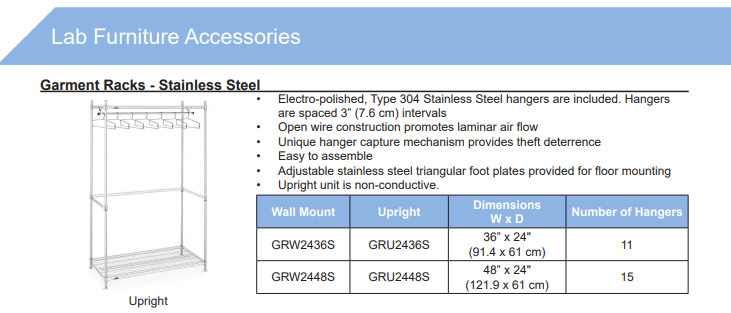
Garment racks are useful for handling lab coats, hazmat suits, and any other laboratory clothing that needs to remain inside the lab or gowning area.
Utility Carts

Consider the supplies, charting tools, laptops, etc. that may need to be moved in and out of the testing space to engage clients, or just around the lab to manage process flow.
Gowning Bench
Gowning benches are appropriate for gowning areas where workers may need to put on hazmat suits or change their footwear.

Work Tables

#10 – Safety
In order to classify as BSL-2, there are safety guidelines that must be met.
First, the lab must have self-closing doors. This limits the potential for dangerous viral strains to leave the lab space should a worker leave the door open when entering or exiting.
In addition, there must be a sink and eyewash station readily available. This can take many different forms, depending on your needs.


Safety is essential when handling a virus such as COVID-19. Your employees need to feel confident that they are safe and have access to necessary facilities, should there be any issues that arise.
Building Your COVID-19 Lab
The US is living in new and defining times. COVID-19 has exposed weak points in every industry and the private lab sector is no exception. There is a great need for private labs capable of handling testing now and in the future. If you are working to get such a lab up and running, these guidelines will get you started.